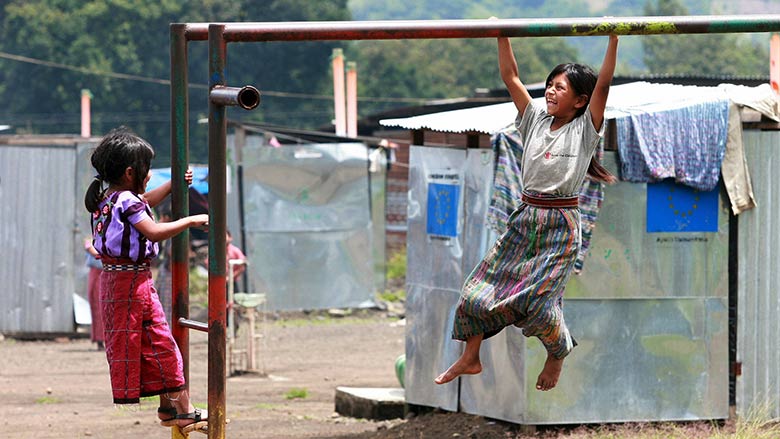Challenges
Land, one of the most important resources in Guatemala, has been historically a source of conflict and social exclusion. Tenure was often insecure due to unreliable cadastral and legal information, weak inter-institutional coordination, and incipient conflict resolution mechanisms. The most significant challenges were found in rural areas where the unequal distribution of land and overlapping tenure regimes tended to exacerbate conflicts. Indigenous peoples were particularly affected by land dispossession and lack of appropriate legal protection. Land issues figured prominently in the 1996 Peace Accords. Since then, consecutive administrations have prioritized land issues to promote economic growth, and have sought integral solutions for the problems confronted in rural areas. Land issues—including access, conflict resolution, and tenure security—are also central to the Government’s 2014 Agrarian Policy, as well as the National Development Plan K’atun: Nuestra Guatemala 2032 formulated in 2014 by the National Council for Urban and Rural Development.
Approach
The Project was the second phase of an Adaptable Program Loan aimed at increasing land tenure security in Guatemala by strengthening the legal and institutional framework for registry and cadastral services. During the first phase, the Registry of Cadastral Information (Registro de Información Catastral, RIC) was created as an autonomous and service-oriented institution to establish, maintain, and update the cadaster. The Registry implemented the second phase focusing on stronger links between the cadaster and registry (including establishing an integrative technological platform), the use of cadastral information for municipal land use planning, and expanding the coverage of cadaster information to over 50 percent of the country. The Project relied on consultative and participatory processes, and conflict mitigation and resolution that benefited indigenous and non-indigenous communities. Direct beneficiaries included those living in rural and urban areas in 41 municipalities, including indigenous and peasant communities who benefited from the registration of communal lands.
Results
During the lifetime of the project, from 2006 – 2015, the following results were achieved:
Increasing land tenure security for close to one million Guatemalans by:
- Recording the use/ownership rights of 274,536 parcels.
- Strengthening the land rights of 96,088 women as sole or joint owner/occupant of their parcels.
- Resolving more than half of the conflicts identified during the cadastral process, and 25% of historic conflicts.
Increasing tenure security of indigenous and peasant communities by:
- Titling 1,679 individual parcels belonging to indigenous peoples.
- Identifying, through a participatory process, 25 potential communal lands, four of which were certified and entered in the Cadastral Registry.
Contributing to sustainable land use and cultural preservation by:
- Demarcating over 300 km of Protected Areas’, and 74km of National Reserve Areas’ boundaries.
- Georeferencing and registering 299 archeological sites and 201 ceremonial sites.
Strengthening the legal and institutional framework by:
- Issuing regulations for RIC to operate as an institution, and for the certification of communal lands (approved in 2007, and implemented through the project)
- Developing the technological platforms for RIC's Public Registry, and for integrating the registry and cadaster.
- Certifying and registering 766 professional surveyors and 1,088 technical surveyors.
- Strengthening local capacity in 22 municipalities, which now use the cadastral information generated by the Project for multiple purposes, while six of them have initiated territorial planning processes.
Bank Group Contribution
The Bank financed the Project through an International Bank for Reconstruction and Development (IBRD) loan of US$62.3 million.
Partners
The UN Food and Agricultural Organization (FAO) was a key partner of the Bank and the Government in providing technical expertise during Project implementation and for the final evaluation.
Moving Forward
Although a follow on project has not yet been prepared, RIC prepared a transition plan to complete the process for the parcels already surveyed, and the certification of additional communal lands in order to ensure the sustainability of Project activities. At Project closure, RIC planned to discuss the transition plan with the incoming government administration.
Beneficiaries
Glenda Colina Larios, municipal officer in the Municipality of San Jerónimo, Department of Baja Verapaz, praised the Project’s focus on recognizing women’s and indigenous peoples’ land rights. She also highlighted the credibility that both the Municipality and RIC have earned with completing the process: “The Municipality, RIC, and the Project have initiated and concluded a process that enables citizens to remain within their indigenous communities, which had previously been discriminated,” adding that “this process has recognized the importance of an inclusive community.”
